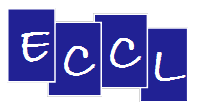Objectives and BenefitsThe main objective of this Action is to develop an interdisciplinary European programme to combine state-of-the-art research in low energy electron induced chemistry and surface science with recent advances in scanning tunnel microscopy to pioneer the new field of electron controlled chemical lithography. Furthermore, it is the aim of this Action to establish Europe’s science at the forefront in this new field of high potential for industrial applications and to provide the means to maintain that position. This Action is expected to have considerable social, scientific and economical impact by:
The success of the Action may be judged by:
At a scientific level the objectives of the Action are to:
Benefits: European groups have been at the forefront of this research, pioneering new methodologies in both theory and experiment. However, Europe’s research efforts in chemical control using electrons remains fragmentary and Europe currently has little infrastructure to bring together the expertise of its disparate groups and, crucially, to link academic research with industrial companies. This Action provides an opportunity to enact a strategy that will ensure that the EU will retain and develop a vibrant research community capable of providing international leadership in the new and exciting field of ECCL. The major objective is therefore to bring together Europe’s expertise in molecular manipulation with the STM and in chemical control by using low energy electrons to develop methodology for ECCL with resolution ranging from few millimetres down to nanometres. ECCL is a methodology that has an enormous potential in a variety of actual and foreseeable industrial processes such as to print chemical and physical properties on surfaces, for the fabrication of micro arrays and for the fabrication of molecular circuits, molecular machines and quantum devices. This is especially true as the industrial community preferably seeks techniques for chemical control that are; (i) relatively inexpensive (ii) composed of apparatuses that are able to be easily adapted to different chemical systems and (iii) requires modest technical skills of the operator. ECCL has the potential to meet these requirements as low energy electrons are particularly well suited to initiate site selective molecular dissociation with high efficiency, and electron sources are easily prepared and readily tuneable through the simple variation of electrostatic potentials. The potential economical benefits obtain by the translation of knowledge and technologies, acquired by the joint effort of the different expertise in this Action to actual applications is large. Therefore this Action involves potential end users from day one. Contacts with 14 companies working in fields where ECCL has potential applications in active collaboration with this Action have been established. The Action aims to strengthen connections between the scientific community and industrial organisations that are potential end users of ECCL. to ensure rapid translation of new knowledge and technology to applications. However, the scientific impact on other fields may be as important since electron induced reactions initiate and drive the basic chemical processes in many others areas of science and technology such as astrochemistry, environmental science, industrial plasmas and radiation damage in living tissues. The scientific impact of bringing together Europe’s expertise in both theory end experiment in the field of electron induced reactions, surface science and STM molecular manipulation is therefore expected to go far beyond the scope of this Action and provide data of use to many other fields. |
Last updated: 28th September 2007


